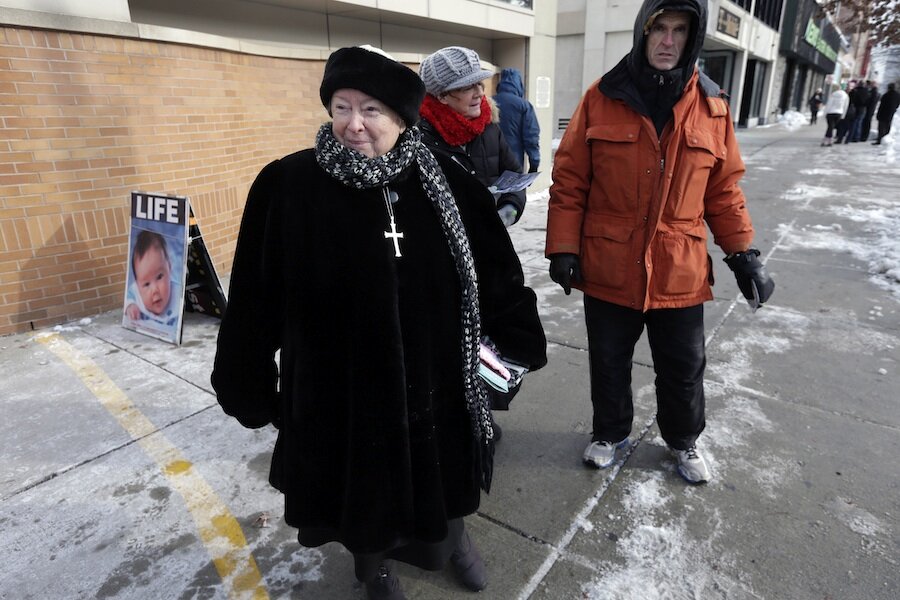Abortion clinic 'buffer zones' in Mass. illegal, Supreme Court rules
Loading...
| Boston
Massachusetts officials who support protest-free zones around abortion clinics said Thursday they would seek to craft a new law after the U.S. Supreme Court ruled unanimously that the state's 35-foot buffer zone was too restrictive and violated the free speech rights of anti-abortion protesters.
Gov. Deval Patrick said the decision was disappointing but said he would work with lawmakers on new rules.
"I think the Legislature shares the concern about how to strike a balance between the ability of women to exercise their constitutional rights and the ability of objectors to exercise theirs," said Patrick, adding that he believed the law that was struck down was fair.
Attorney General Martha Coakley, whose office argued before the justices to keep the 35-foot zone, said the ruling appeared to leave open other alternatives. Those include the return to an earlier 6-foot "floating" buffer zone that created a moving protest-free zone that encircled anyone entering a clinic. Coakley said that model was cumbersome because it wasn't always clear where the line was.
"One of the reasons we moved from the floating buffer zone is, as we explained to the court, was that it didn't work very well," said Coakley, a Democratic candidate for governor. "The floating zone just creates just much more uncertainty about what's protected space and what isn't."
Coakley said the 35-foot, fixed zone was clearer for patients, protesters and police.
Senate President Therese Murray, D-Plymouth, said she expected lawmakers to act before the July 31 end of the legislative session, but would not speculate on what changes might be sought. House Speaker Robert DeLeo also said there was time to act.
Two people were killed and five others wounded when a man opened fire at two Boston-area abortion clinics on Dec. 30, 1994, prompting first the creation of the floating buffer zone, later replaced by the fixed 35-foot zone.
Anne Fox, president of Massachusetts Citizens for Life, praised the high court's decision and noted that other laws prohibit harassment and the blocking of entrances to buildings.
"This is a victory for all citizens who value their First Amendment rights and for clinic-bound women who might need someone to talk to," Fox said.
Planned Parenthood League of Massachusetts President Martha Walz said in the absence of buffer zones her organization would, if necessary, pursue injunctions against unruly protesters.





